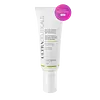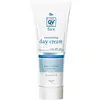What's inside
What's inside
 Key Ingredients
Key Ingredients

 Benefits
Benefits

 Concerns
Concerns

 Ingredients Side-by-side
Ingredients Side-by-side

Butyl Methoxydibenzoylmethane 4%
UV AbsorberOctocrylene 4%
UV AbsorberPhenylbenzimidazole Sulfonic Acid 4%
UV AbsorberEthylhexyl Methoxycinnamate 3%
UV AbsorberBis-Ethylhexyloxyphenol Methoxyphenyl Triazine 2%
Skin ConditioningWater
Skin ConditioningDicaprylyl Carbonate
EmollientSilica
AbrasiveGlycerin
HumectantNiacinamide
SmoothingCetearyl Alcohol
EmollientMethylpropanediol
SolventMethyl Glucose Sesquistearate
EmollientPEG-20 Methyl Glucose Sesquistearate
EmulsifyingCaprylyl Methicone
Skin ConditioningC12-15 Alkyl Benzoate
AntimicrobialSodium Hydroxide
BufferingCaprylyl Glycol
EmollientButyrospermum Parkii Butter
Skin ConditioningPolysorbate 60
EmulsifyingCarbomer
Emulsion StabilisingPanthenol
Skin ConditioningTocopheryl Acetate
AntioxidantPvp
Emulsion StabilisingHydrogenated Grapefruit Seed Oil
StabilisingAcrylates/C10-30 Alkyl Acrylate Crosspolymer
Emulsion StabilisingPhenylpropanol
MaskingBHT
AntioxidantDisodium EDTA
Citrus Aurantium Bergamia Fruit Oil
MaskingSodium Hyaluronate
HumectantTocopherol
AntioxidantLactic Acid
BufferingButyl Methoxydibenzoylmethane 4%, Octocrylene 4%, Phenylbenzimidazole Sulfonic Acid 4%, Ethylhexyl Methoxycinnamate 3%, Bis-Ethylhexyloxyphenol Methoxyphenyl Triazine 2%, Water, Dicaprylyl Carbonate, Silica, Glycerin, Niacinamide, Cetearyl Alcohol, Methylpropanediol, Methyl Glucose Sesquistearate, PEG-20 Methyl Glucose Sesquistearate, Caprylyl Methicone, C12-15 Alkyl Benzoate, Sodium Hydroxide, Caprylyl Glycol, Butyrospermum Parkii Butter, Polysorbate 60, Carbomer, Panthenol, Tocopheryl Acetate, Pvp, Hydrogenated Grapefruit Seed Oil, Acrylates/C10-30 Alkyl Acrylate Crosspolymer, Phenylpropanol, BHT, Disodium EDTA, Citrus Aurantium Bergamia Fruit Oil, Sodium Hyaluronate, Tocopherol, Lactic Acid
Water
Skin ConditioningIsopropyl Palmitate
EmollientC12-15 Alkyl Benzoate
AntimicrobialDiisopropyl Adipate
EmollientPropylene Glycol Dibenzoate
Skin ConditioningNiacinamide
SmoothingMethylene Bis-Benzotriazolyl Tetramethylbutylphenol
UV FilterBis-Ethylhexyloxyphenol Methoxyphenyl Triazine
Skin ConditioningNeopentyl Glycol Diheptanoate
EmollientGlycerin
HumectantPEG-100 Stearate
Butylene Glycol
HumectantCetyl Alcohol
EmollientParaffinum Liquidum
EmollientGlyceryl Stearate
EmollientPotassium Cetyl Phosphate
EmulsifyingCarthamus Tinctorius Seed Oil
MaskingMagnesium Aluminum Silicate
AbsorbentDecyl Glucoside
CleansingPolyacrylic Acid
Emulsion StabilisingAminomethyl Propanol
BufferingMethylparaben
PreservativePropylparaben
PreservativeDichlorobenzyl Alcohol
AntimicrobialXanthan Gum
EmulsifyingPropylene Glycol
HumectantWater, Isopropyl Palmitate, C12-15 Alkyl Benzoate, Diisopropyl Adipate, Propylene Glycol Dibenzoate, Niacinamide, Methylene Bis-Benzotriazolyl Tetramethylbutylphenol, Bis-Ethylhexyloxyphenol Methoxyphenyl Triazine, Neopentyl Glycol Diheptanoate, Glycerin, PEG-100 Stearate, Butylene Glycol, Cetyl Alcohol, Paraffinum Liquidum, Glyceryl Stearate, Potassium Cetyl Phosphate, Carthamus Tinctorius Seed Oil, Magnesium Aluminum Silicate, Decyl Glucoside, Polyacrylic Acid, Aminomethyl Propanol, Methylparaben, Propylparaben, Dichlorobenzyl Alcohol, Xanthan Gum, Propylene Glycol
 Reviews
Reviews

Ingredients Explained
These ingredients are found in both products.
Ingredients higher up in an ingredient list are typically present in a larger amount.
You might know this ingredient as Tinosorb S or Bemotrizinol. It is a UV filter that covers both UVA and UVB rays.
This ingredient has two peak UV absorption peaks ( 310 and 340 nm) and is able to absorb both UV-A and UV-B rays. This ingredient works by preventing UV rays from reaching and damaging your skin.
On top of that - it is highly photostable and helps prevent the photodegration of other sunscreen ingredients such as avobenzone.
Tinosorb S is allowed in the EU, Australia, and Asia. It is close to being approved by the FDA and we'll hopefully get this ingredient in the U.S. by late 2025.
Fun fact: Tinosorb S is the most effective UV absorber at maximum concentration (measured by SPF) permitted in the EU.
This ingredient is oil-soluble, so your oil-cleansers will take this right off at night.
Learn more about Bis-Ethylhexyloxyphenol Methoxyphenyl TriazineC12-15 Alkyl Benzoate is made up of Benzoic Acid and long chain alcohols. It has a low molecular weight.
C12-15 Alkyl Benzoate is an emollient and texture enhancer. Due to its solubility, it is often used in sunscreens to help evenly distribute active ingredients.
As an emollient, C12-15 Alkyl Benzoate helps soften and hydrate your skin. Emollients create a film on your skin that traps moisture within.
This ingredient has been reported to cause eye irritation.
Learn more about C12-15 Alkyl BenzoateGlycerin is already naturally found in your skin. It helps moisturize and protect your skin.
A study from 2016 found glycerin to be more effective as a humectant than AHAs and hyaluronic acid.
As a humectant, it helps the skin stay hydrated by pulling moisture to your skin. The low molecular weight of glycerin allows it to pull moisture into the deeper layers of your skin.
Hydrated skin improves your skin barrier; Your skin barrier helps protect against irritants and bacteria.
Glycerin has also been found to have antimicrobial and antiviral properties. Due to these properties, glycerin is often used in wound and burn treatments.
In cosmetics, glycerin is usually derived from plants such as soybean or palm. However, it can also be sourced from animals, such as tallow or animal fat.
This ingredient is organic, colorless, odorless, and non-toxic.
Glycerin is the name for this ingredient in American English. British English uses Glycerol/Glycerine.
Learn more about GlycerinNiacinamide is a multitasking form of vitamin B3 that strengthens the skin barrier, reduces pores and dark spots, regulates oil, and improves signs of aging.
And the best part? It's gentle and well-tolerated by most skin types, including sensitive and reactive skin.
You might have heard of "niacin flush", or the reddening of skin that causes itchiness. Niacinamide has not been found to cause this.
In very rare cases, some individuals may not be able to tolerate niacinamide at all or experience an allergic reaction to it.
If you are experiencing flaking, irritation, and dryness with this ingredient, be sure to double check all your products as this ingredient can be found in all categories of skincare.
When incorporating niacinamide into your routine, look out for concentration amounts. Typically, 5% niacinamide provides benefits such as fading dark spots. However, if you have sensitive skin, it is better to begin with a smaller concentration.
When you apply niacinamide to your skin, your body converts it into nicotinamide adenine dinucleotide (NAD). NAD is an essential coenzyme that is already found in your cells as "fuel" and powers countless biological processes.
In your skin, NAD helps repair cell damage, produce new healthy cells, support collagen production, strengthen the skin barrier, and fight environmental stressors (like UV and pollution).
Our natural NAD levels start to decline with age, leading to slower skin repair, visible aging, and a weaker skin barrier. By providing your skin niacinamide, you're recharging your skin's NAD levels. This leads to stronger, healthier, and younger looking skin.
Another name for vitamin B3 is nicotinamide. This vitamin is water-soluble and our bodies don't store it. We obtain Vitamin B3 from either food or skincare. Meat, fish, wheat, yeast, and leafy greens contain vitamin B3.
The type of niacinamide used in skincare is synthetically created.
Learn more about NiacinamideWater. It's the most common cosmetic ingredient of all. You'll usually see it at the top of ingredient lists, meaning that it makes up the largest part of the product.
So why is it so popular? Water most often acts as a solvent - this means that it helps dissolve other ingredients into the formulation.
You'll also recognize water as that liquid we all need to stay alive. If you see this, drink a glass of water. Stay hydrated!
Learn more about Water